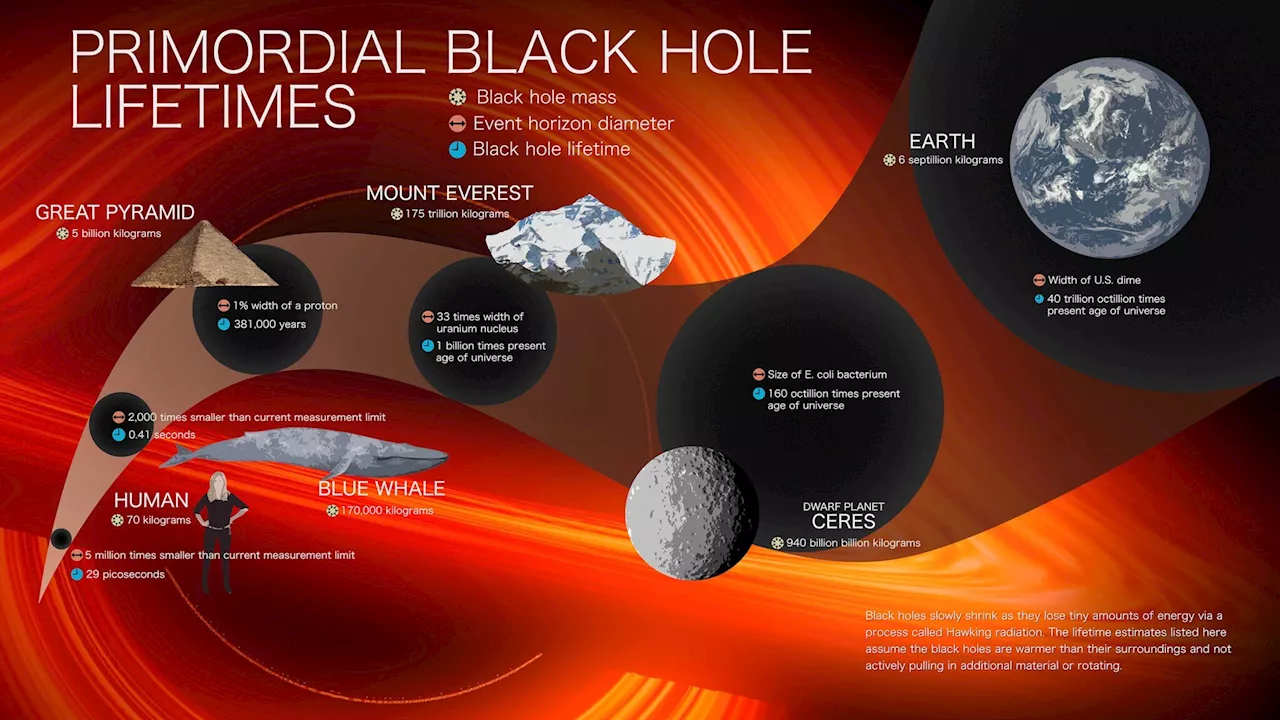Space and astronomy news
Artist view of small black holes in the accretion disk of a supermassive black hole. Credit: Caltech/R. Hurt
There are lots of primordial black hole models, but they all propose that they formed in the earliest moments of the universe. Depending on the particular model, they could range in size from tiny, mountain-mass ones to sub-stellar black holes more massive than a super-Earth. If they are particularly massive, they could have been the seeds of the galactic black holes we see today. If they are particularly tiny, they might be the source of dark matter.
United States Latest News, United States Headlines
Similar News:You can also read news stories similar to this one that we have collected from other news sources.
 Stirring the Primordial Soup: Unveiling Secrets of Early Life With Synthetic ModelsScience, Space and Technology News 2024
Stirring the Primordial Soup: Unveiling Secrets of Early Life With Synthetic ModelsScience, Space and Technology News 2024
Read more »
 How NASA's Roman mission will hunt for primordial black holesAstronomers have discovered black holes ranging from a few times the sun's mass to tens of billions. Now a group of scientists has predicted that NASA's Nancy Grace Roman Space Telescope could find a class of 'featherweight' black holes that has so far eluded detection.
How NASA's Roman mission will hunt for primordial black holesAstronomers have discovered black holes ranging from a few times the sun's mass to tens of billions. Now a group of scientists has predicted that NASA's Nancy Grace Roman Space Telescope could find a class of 'featherweight' black holes that has so far eluded detection.
Read more »
 How NASA’s Roman Mission Will Hunt for Primordial Black HolesAstronomers have discovered black holes ranging from a few times the Sun’s mass to tens of billions. Now a group of scientists has predicted that NASA’s Nancy
How NASA’s Roman Mission Will Hunt for Primordial Black HolesAstronomers have discovered black holes ranging from a few times the Sun’s mass to tens of billions. Now a group of scientists has predicted that NASA’s Nancy
Read more »
 Roman Space Telescope Will Be Hunting For Primordial Black HolesThe Nancy Grace Roman Space Telescope will search for small rogue planets. It might find some primordial black holes among them.
Roman Space Telescope Will Be Hunting For Primordial Black HolesThe Nancy Grace Roman Space Telescope will search for small rogue planets. It might find some primordial black holes among them.
Read more »
 Marfa’s ultra-hip El Cosmico hotel to grow with 3D-printed primordial designsAbout 15 years after opening, Marfa’s El Cosmico hotel is set to shift from its original campgrounds to a 3D-printed compound on more than 60 acres three...
Marfa’s ultra-hip El Cosmico hotel to grow with 3D-printed primordial designsAbout 15 years after opening, Marfa’s El Cosmico hotel is set to shift from its original campgrounds to a 3D-printed compound on more than 60 acres three...
Read more »
 NASA’s Roman to look for primordial black holes at 1000x pace than HubbleWith a field of view at least 100 times larger than Hubble's, Roman telescope will survey the sky 1,000 times faster than the former can .
NASA’s Roman to look for primordial black holes at 1000x pace than HubbleWith a field of view at least 100 times larger than Hubble's, Roman telescope will survey the sky 1,000 times faster than the former can .
Read more »
